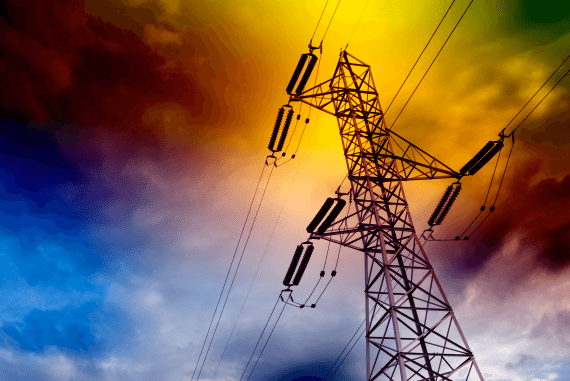- Home ››
- Health and Safety Training ››
- Environmental Health and Safety ››
- Energy ››
- Energy Conservation for Businesses
Energy Conservation for Businesses
Introduction

The amount of energy the average company expends is incredible. Even in an office, keeping almost every light in the building on for a total of 40+ hours a week, and electronics plugged into outlets 24/7 is not only costly, but also has a negative impact on the environment.
Although it is steadily improving, many power plants do not create energy from sources that are environmentally friendly, still relying on the burning of fossil fuels such as coal and oil to produce electricity. This means that every unit of energy produced in this manner will be associated with, and responsible for, the emission of pollution during the creation of that energy.
Reducing Energy Consumption
Companies need to lower their energy consumption in order to have less of a negative environmental impact. With the influx of technology in the workplace, this task may seem difficult to most companies. However, there are simple ways for businesses to lower the amount of energy that they use.
A first step a business should take towards lowering its energy consumption is asking workers to switch off equipment at the plug at the end of the work day. Even items that are on standby still use electricity. Having dozens of items draining electricity at the workplace whilst the employees of the company are at home is a waste of money and resources.
Before workers go home, they should switch off printers, computers, and whatever else they can. The only exception to this rule is electronics that need to be kept plugged in, such as refrigerators or most computer servers. If an electronic item is difficult to unplug, workers should make sure that the product is at least on standby rather than left on at full operating power, so that the amount of energy the machinery uses is lowered as much as possible.
This "Unplug it!" philosophy should also be applied to any electronic item that is only used every once in a while by the office. For example, if there is a specialised printer that is only used every few weeks, this printer should be unplugged most of the time and only plugged in when someone plans to use the printer. The lights should be turned off, as should the heating in any room that is only occupied infrequently or for just a few minutes at a time. This includes any toilet areas when there are not a lot of people in the building using the facilities.
The charging of electronic devices can also absorb a great deal of electricity. To increase the speed of charging - which saves both energy and valuable time - workers, if they can, should turn off their technology and just let the electronic device charge. If technology has to be in use whilst being charged, dim the display and change the battery plan to "Power Saver" (if that or some similar option is available) to conserve energy.
Energy Efficient Lighting
Yet another method of energy conservation is the installation of energy-efficient lightning. Most businesses use traditional light bulbs or fluorescent lights to illuminate the workplace. However, better, longer-lasting bulbs are now available on the market. These bulbs can save companies hundreds of pounds in electricity costs.
Businesses currently have two options for energy-efficient light bulbs: CFL lightbulbs and LED bulbs. CFL bulbs contain mercury and are somewhat difficult to dispose of properly. Broken CFL light bulbs are a health and environmental hazard, which is not the case with LED bulbs. LED bulbs may be more expensive, but they last for a longer time than most other types of light bulbs, including CFL bulbs. These bulbs come in various forms, ranging from lamp appropriate to fluorescent tubing.
Businesses can also purchase new equipment that is much more energy-efficient. Companies who own and operate a large amount of older equipment should consider this option. Although not always the case, the rule of thumb is that the older the piece of equipment, the less the equipment is capable of energy efficiency. If an office is littered with older equipment, the machines are also probably consuming more energy than the average businesses. Because of this, businesses with older equipment need to update their equipment to newer models. New models tend to not only be more energy-efficient, but also more capable of meeting the demands of a modern business, thus saving the company even more resources than initially intended. Newer equipment is also more likely to be safer as old machines begin to have worn or loose parts which can contribute to a malfunction and endanger the health and safety of anybody nearby should it break.
The Business Can Create its Own Renewable Energy Rather than Relying on Power from The Grid
The introduction of renewable energy into the workplace is a significant statement by the managers of a company as to their commitment about protecting the planet and the environment.
Tiny solar panelled electric generators could be brought in, placed in a sunny spot in the office or, more typically, on the roof of the building, and this solar energy used to power something that requires a medium amount of energy, such as a small printer. A large solar generator can be used to power a larger office supply or multiple small office supplies. Because these generators are solar powered, they will provide an unlimited supply of free and unlimited renewable energy for the business, which is also electricity that is not needed to be provided from the Grid which may have been produced using fossil fuels. The only downsides of course are the initial cost of installing the system, and the potential lack of charge should the sun not be shining for a few days!
Unfortunately, updating equipment and adding renewable energy sources to the workplace can be a costly and time-consuming process. Although businesses may see energy conservation as a difficult task, this environmentally conscious action probably is one of the easiest ways to "go green", with simple tasks such as switching off lights and machines when not in use having a significant effect in the long term. Successfully conserving as much energy as possible can save a company thousands and save the environment from a large amount of additional pollutants.

